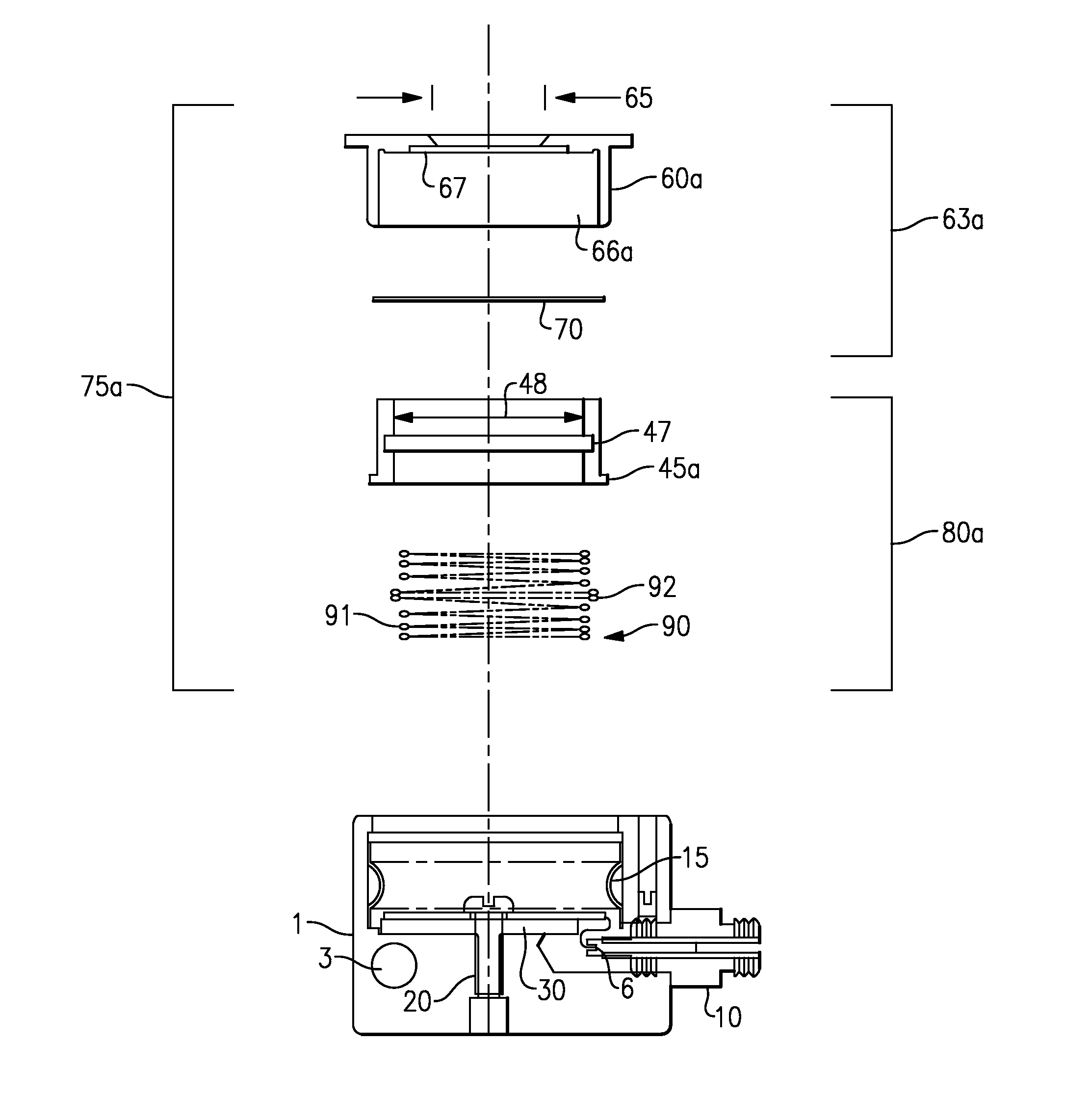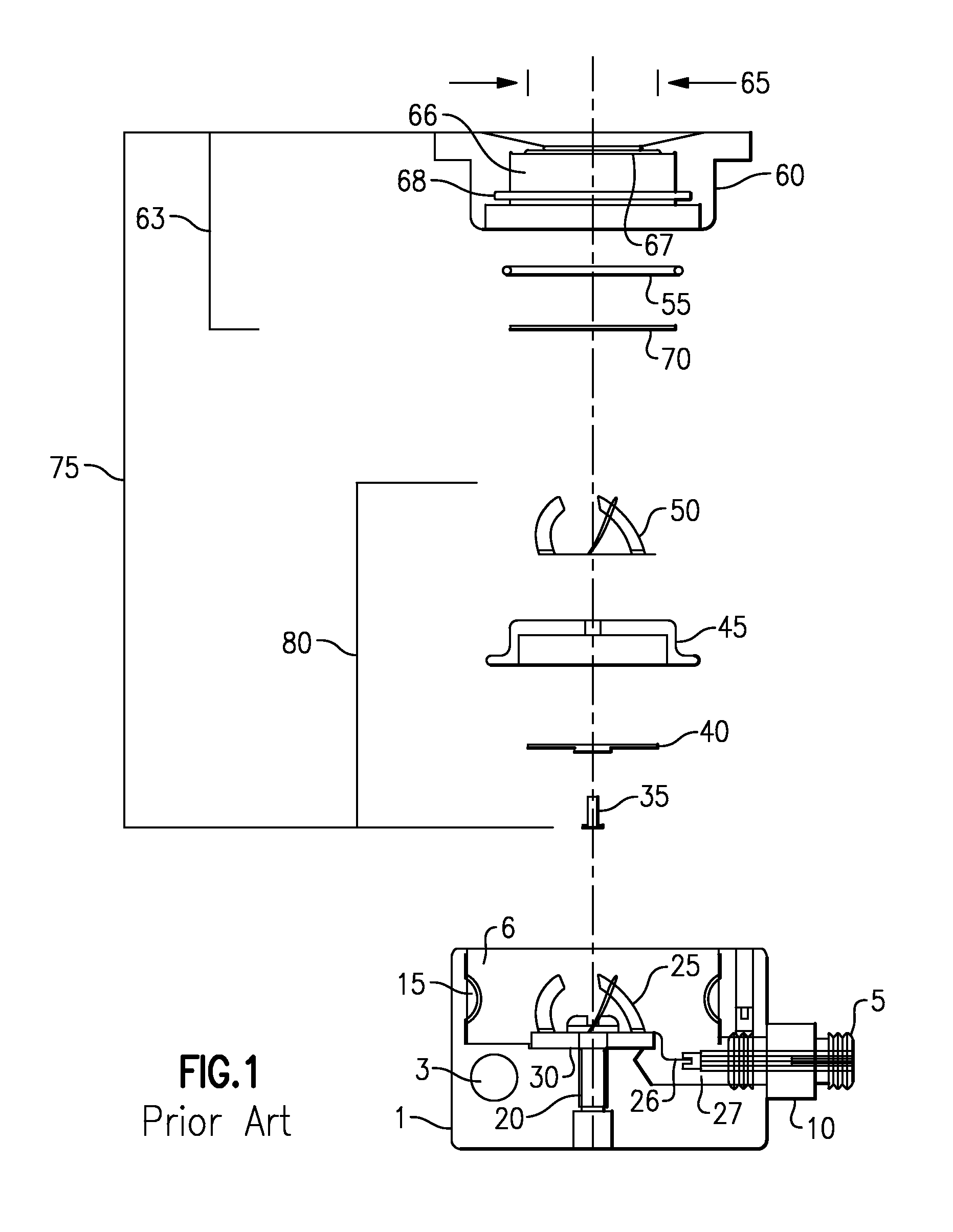Combined crystal retainer and contact system for deposition monitor sensors
a monitor and crystal retainer technology, applied in resistance/reactance/impedence, instruments, material analysis, etc., can solve the problems of loss of q, affecting the measurement effect, and the measurement circuit is substantially less able to make a consistent frequency measurement, etc., to increase the optical communication channel or spectral based chemical analysis, improve the wear resistance of the machine component, and improve the effect of production
- Summary
- Abstract
- Description
- Claims
- Application Information
AI Technical Summary
Benefits of technology
Problems solved by technology
Method used
Image
Examples
Embodiment Construction
[0042]The following description relates to several embodiments of a system for retaining a monitor crystal that is used in conjunction with a deposition process monitor, the system further insuring electrical contact between an electrical source and a face of a retained monitor crystal, such as a piezoelectric crystal. Throughout the course of discussion, several terms are used in order to describe the invention in accordance with the accompanying drawings. These terms, such as “front”, “rear”, “lateral”, “upper”, “lower”, “proximal”, “distal” and the like are merely intended to provide a suitable frame of reference with regard to the accompanying drawings. These terms are not intended to otherwise inhibit the scope of the present invention, including the claims. In addition, the included drawings are not necessarily to scale and are simply intended to clearly illustrate the salient features of the invention.
[0043]A typical prior art version of a deposition sensor that incorporates ...
PUM
| Property | Measurement | Unit |
|---|---|---|
| diameter | aaaaa | aaaaa |
| electrical | aaaaa | aaaaa |
| flexible | aaaaa | aaaaa |
Abstract
Description
Claims
Application Information
 Login to View More
Login to View More - R&D
- Intellectual Property
- Life Sciences
- Materials
- Tech Scout
- Unparalleled Data Quality
- Higher Quality Content
- 60% Fewer Hallucinations
Browse by: Latest US Patents, China's latest patents, Technical Efficacy Thesaurus, Application Domain, Technology Topic, Popular Technical Reports.
© 2025 PatSnap. All rights reserved.Legal|Privacy policy|Modern Slavery Act Transparency Statement|Sitemap|About US| Contact US: help@patsnap.com



